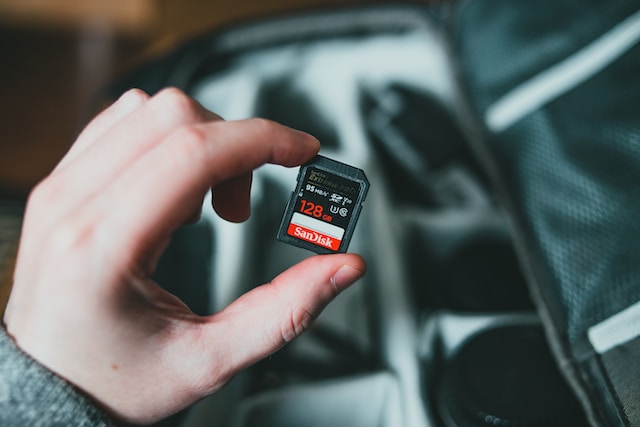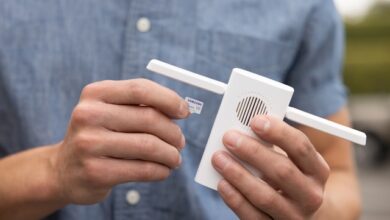A Guide to Buying SD Cards: Specs, Speeds, Features Explained

Purchasing an SD card can appear difficult. Here’s how to pick the SD card that works best for your gadget.
If you’re not familiar with SD card types, specifications, and abilities, purchasing one can be confusing. You don’t want to overspend on specifications you don’t need, but you also don’t want to get a card with inadequate speed or storage.
Although SD features and specs are very confusing, knowing the specs can help you choose fastest and largest SD card for any given scenario without going over budget.
What Do the Specs, Symbols, and Numbers on an SD Card Mean?
If you’ve ever wondered what all those symbols, letters, and numbers on an SD card mean, you’ll be relieved to hear that reading the label is not nearly as challenging as it sounds.
The details usually get connected to two things:
1. The SD card’s ability to store data
2. How quickly information can be read from or transferred to an SD card
3. Most users probably just need to quickly glance at the maximum transfer speed and space size listed on the front of an SD card.
Even if the remaining information relates to these two criteria, it is still helpful to understand its meaning.
Maximum Transfer Speed
The maximum transfer speed of an SD card reflects the amount of data it can move in a second. However keep in mind that these are maximum potentials at optimum efficiency; actual speeds will be slower.
Measuring in MB/s, this is usually the second-most visible piece of information on a card label, behind the manufacturer’s logo and product name. This has an important influence on card prices, to be you can probably believe, with fast, high-capacity cards usually being the most expensive.
SD Card Types
After reviewing the two most crucial requirements, here’s where things start to get a little complex. The SD card types are the first type, but this just groups cards according to their amount of space.
Using a 32GB SDXC card instead of a 32GB SDHC with the same transfer speed does not result in any speed gains. Though most SD cards and SD card slots are compatible, a great deal of today’s SD cards are SDXC. This is one of the mistakes to avoid when buying an SD card.
The most crucial thing is selecting an SD card with proper speed and storage.
Bus Interface
You can only obtain UHS-I and UHS-II SD cards from trustworthy suppliers because UHS-III was never fully adopted. Only use this specification to make sure the card you’re buying is compatible with your device. Since most current technology with an SD slot can support both UHS-I and UHS-II, either card will function thanks to backward compatibility.
Speed Class Rating
To put it mildly, the specs for maximum transfer speeds are overly optimistic. Since you can’t accomplish those results in the real world, you should continually verify the SD card’s speed class rating.
There have been three separate speed classes since 2000:
The perplexing thing about current cards is that the label lists all three classifications. Thus, all three sets of C10, U3, and V90 speed classes will still be listed on the label if you buy a card with a video speed class of V90, such as the SanDisk 128GB Extreme PRO.
SD Card vs. microSD Card: What’s the Difference?
The size of the cards itself is the sole difference between SD and microSD cards that matters. SD cards may store more data than microSD cards because of their greater physical size, but this is only true when you start looking at 1TB or more of capacity.
SD Card vs. SD Express
The most recent version of SD storage technology, called SD Express, promises higher storage capacities and quicker speeds once more. Sadly, very little support exists, and very few devices can even equal SD Express cards’ transfer speeds.
What Is a Wi-Fi SD Card?
One special kind of SD card with Wi-Fi connectivity is the Wi-Fi SD card. Although it includes inbuilt Wi-Fi, it seems to be a regular SD card. This feature allows it to connect wirelessly to other devices, like PCs, tablets, and smartphones. After the card has been connected, you can move files—such as pictures or videos—from it to the device without removing it from your camera or activating any physical cords.
Check These 4 Specs Before Buying an SD Card
It’s one thing to know about the characteristics and capabilities of SD cards, but there are other factors to take into account than card performance. Here’s a quick summary of the important specs and other factors to think about when purchasing an SD card.
1. Storage Capacity
The easiest SD card criteria to comprehend is storage capacity, but how much space is truly needed? It all depends upon your intended use for the SD card. Determine the size of the files you wish to store and the number of files you want to put on a single card to get an easy answer to this question.
2. Transfer Speed & Speed Class
You want a card that is quick enough for the uses you have in mind, in addition to having suitable storage space. However, not everyone requires the quickest cards. You might not be very concerned about speed if all you’re doing is transferring data from one device to another while you’re doing something else.
On the other hand, you need a card that can write just as quickly as you shoot if you work as a wedding photographer or filmmaker and are always taking high-resolution pictures. As mentioned before, you may choose faster cards more quickly by looking up the transfer speed (MB/s) on the front of the card, but statistics are deceptive.
3. Device Compatibility
The majority of SD cards you buy will fit in any SD card slot because of the card’s backward compatibility. A high-spec card in an older SD slot won’t, however, function to its fullest potential. Therefore, if your device only supports UHS-I, there’s not much need in purchasing fastest UHS-II card.
You may select the finest card for your needs without paying too much for features you won’t use through making sure your device is compatible with the card you want.
4. SD Slot Transfer Speed
The transfer speed of the SD slot on your device should be the last thing to consider before buying an SD card. Once more, you don’t want to shell out a lot of money for a very fast card just to find that the SD slot on your device can’t read or write data as fast.
For example, Wired claims that the Nintendo Switch is capable of carrying data at up to 90 MB/s. Regretfully, finding a device’s SD slot speed isn’t always simple. The most effective way to determine an SD card slot’s speed is to do some research and test:
- See whether a specific transfer speed is stated in the user manual or device guide.
- Do an internet search for “[device name] SD card speed” or “[device name] SD card slot speed.” For the answers, you could have to go through a few websites.
- Read assessments for the item you intend to buy or are now using. It’s possible that a reviewer has already mentioned the device’s maximum SD transfer speed.
- You could try to time how long file transfers take if you already own the device and many SD cards that have different specs. This is more difficult to do than it sounds, but it could still be helpful because certain devices don’t provide a transfer time or data rate.



